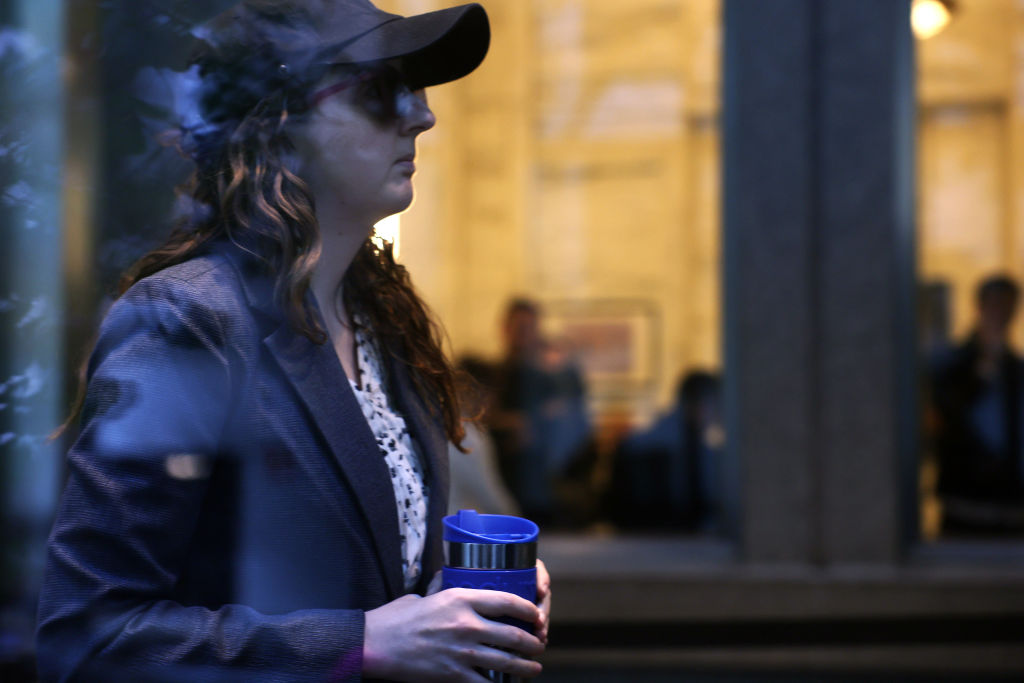Former Alameda Research co-CEO Caroline Ellison spent all day Wednesday on the stand in her second day in court in the criminal trial of Sam Bankman-Fried, the founder of failed cryptocurrency exchange FTX. She provided further details on how FTX sister company Alameda and Bankman-Fried defrauded investors and misused customer funds.
Bankman-Fried’s on-and-off again girlfriend has pleaded guilty to criminal charges including defrauding FTX customers and investors. In her testimony yesterday, she said she deceived lenders by sending balance sheets that made Alameda look less risky than it was.
On the stand Wednesday, she provided more details about the firm’s relationships with lenders, who had started to recall loans amid a downturn in the crypto market last year, according to a live blog of the trial from court reporting organization Inner City Press.
One of Alameda’s key lenders Genesis, the now bankrupt crypto trading service, wanted the return of US$400 million in loans. Its head of lending asked to see an up-to-date balance sheet to understand the firm’s financial position, Ellison said. Bankman-Fried pushed back on this, she added.
“He told me to come up with alternative ways to present the information,” Ellison said. “He wanted me to conceal things on our balance sheet. So I prepared seven different balance sheets.”
Bankman-Fried selected a balance sheet that did not disclose that Alameda owed around US$10 billion to FTX customers, Ellison said. This figure then rose to US$13 billion by September of last year, Ellison added.
Courting MBS
One way Bankman-Fried planned to recoup funds was by raising capital from investors, Ellison said. The Saudi Crown Prince and Prime Minister Mohammed Bin Salman was listed as a key target in a google document, Ellison testified.
At this time last year, it was widely reported that Bankman-Fried was seeking to raise funds for FTX. By October he was in the Middle East trying to raise funds in person.
The google doc also listed that Bankman-Fried was keen to get regulators to crack down on rival exchange Binance, Ellison said.
Binance’s CEO Changpeng Zhao triggered the collapse of FTX by selling his large stake in the token FTT. That then created a surge in withdrawals and revealed FTX’s shortfall in customer funds.
Bribing Chinese officials
Another key revelation from Ellison was details on the decision to pay bribes to Chinese officials to unlock US$1 billion of Alameda funds frozen in the country as part of a money laundering investigation.
“Sam said [David] Ma had found a way to get our accounts unfrozen, if we just sent to these crypto addresses, US$100 million. It was November of 2021,” Ellison said.
An Alameda employee named Handi disagreed with FTX business development manager Ma’s decision, Ellison said. But was told to “shut the f— up,” by Bankman-Fried, Ellison added.
U.S. District Court Judge Lewis Kaplan told the jury that Bankman-Fried was not being charged in this case for bribery of Chinese officials, but that it was being offered for motive.
The prosecution had attempted to include violations of anti-bribery provisions of the Foreign Corrupt Practices Act. However, a court ruling upheld Bankman-Fried’s request that the government of the Bahamas — where he was first arrested in December last year — should not allow additional charges. The bribery charge was then dropped.
The defense had less than 30 minutes of cross examination of Ellison before court wrapped up. The cross examination will continue into tomorrow.
See similar article: The rise and continuing fall of Sam Bankman-Fried: A step-by-step guide to his case so far






